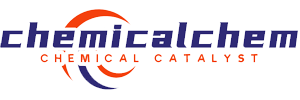background and overview[1]
2-bromo-1-(4-morpholinophenyl)-1-ethanone can be used as a pharmaceutical synthesis intermediate.
preparation[1]
the preparation of 2-bromo-1-(4-morpholinophenyl)-1-ethanone is as follows:

1) preparation of intermediate 4-morpholinophenylethanone
take 50g of 4-fluoroacetophenone, dissolve it in 350ml of dimethyl sulfoxide (dmso) (about 7 to 8 times mass to volume ratio), stir evenly, and it will become a colorless solution. slowly add 78.8g (0.9mol) of morpholine dropwise at room temperature. after the dripping is complete, raise the temperature to 120°c and reflux. the solution gradually turned light yellow. react for 3 to 4 hours, and use tlc to monitor the reaction end point. the reaction is complete. after the reaction is completed, let it stand to room temperature. slowly pour the reaction solution into a large amount of ice water, stir, and a yellow solid will precipitate. after suction filtration, collect the filter cake, wash it with water twice, and dry it to obtain 63 g of yellow solid (yield 85%).
2) preparation of intermediate 2,2-dibromo-1-(4-morpholinophenyl)ethanone
add 30g (0.15mol) of 4-morpholinophenylethanone and 210ml of concentrated sulfuric acid (about 7 to 8 times the mass to volume ratio) into a 500ml three-necked flask equipped with mechanical stirring and a thermometer, and stir until dissolve. cool the reaction solution to 0°c, slowly drop 7.8 ml of bromine at this temperature, and control the temperature at 0°c. after the dripping is completed, react at room temperature. the reaction took about 6 hours, and tlc was used to monitor whether the reaction was complete. pour the reaction solution into a large amount of ice water. if a yellow-green solid precipitates, stir. after the ice dissolves, filter and wash with water until neutral. the filter cake was collected and dried to obtain 47g of yellow-green solid, with a yield of 88%.
3) preparation of compound 2-bromo-1-(4-morpholinophenyl)-1-ethanone
add 30g of 2,2-bromo-1-(4-morpholinophenyl)ethanone (0.08mol) and about 160ml of tetrahydrofuran (5 to 6 times mass to volume ratio) into a 500ml three-neck flask, stir and cool to 0℃. slowly add a mixed solution of 11.1 ml of diethyl phosphite, 12 ml of triethylamine, and 70 ml of tetrahydrofuran dropwise, keeping the temperature at 0°c. after the dripping is completed, the reaction takes place at room temperature for about 5 hours. the reaction endpoint was monitored using tlc and the reaction was complete. the reaction solution was suction filtered to obtain a slightly yellow solid (containing a very small amount of product), most of which were impurities. collect the filtrate and concentrate to about 20 ml. pour the concentrated solution into a large amount of ice water. if a yellow-green solid precipitates, continue stirring until all the ice cubes melt. filter with suction, wash the filter cake with water, and dry to obtain 20.1g of yellow-green product 2-bromo-1-(4-morpholinophenyl)-1-ethanone, with a yield of 85.5%.
main reference materials
[1] design and synthesis of cyclin-dependent kinase inhibitors (cdks) intermediates

 微信扫一扫打赏
微信扫一扫打赏

